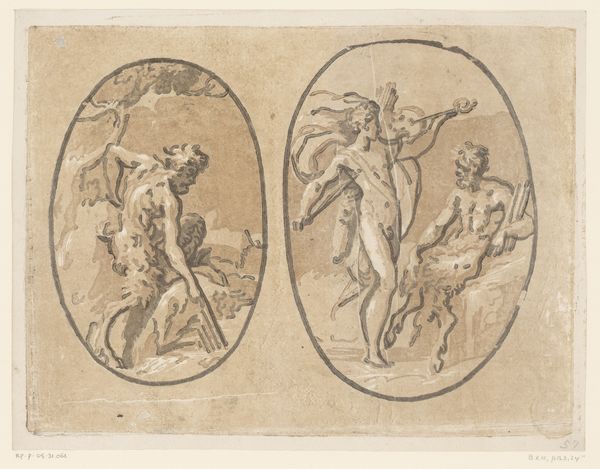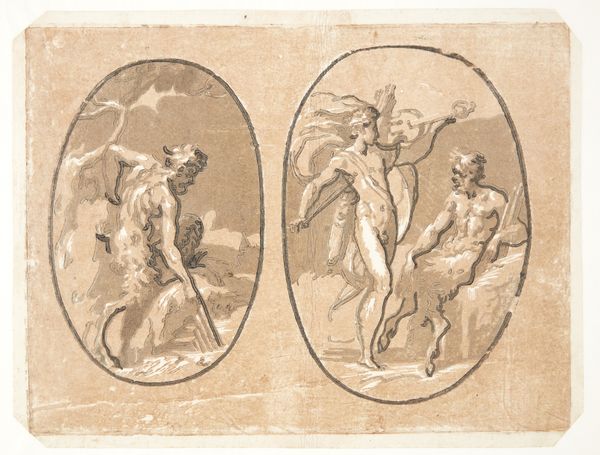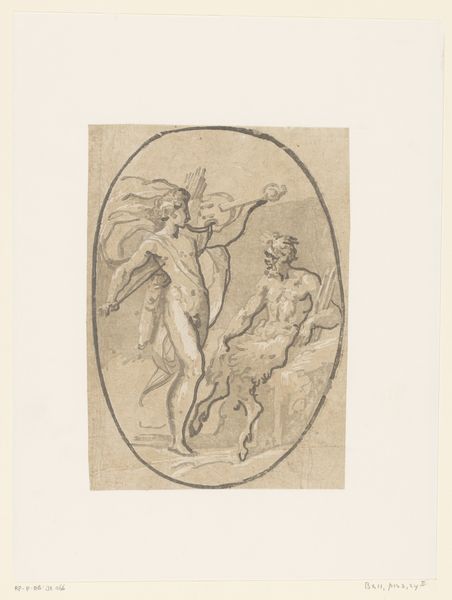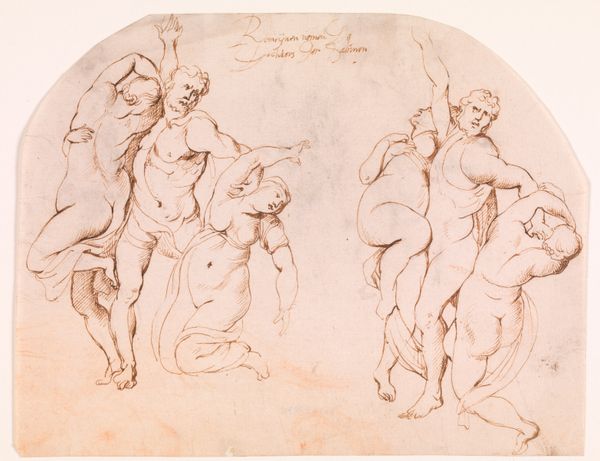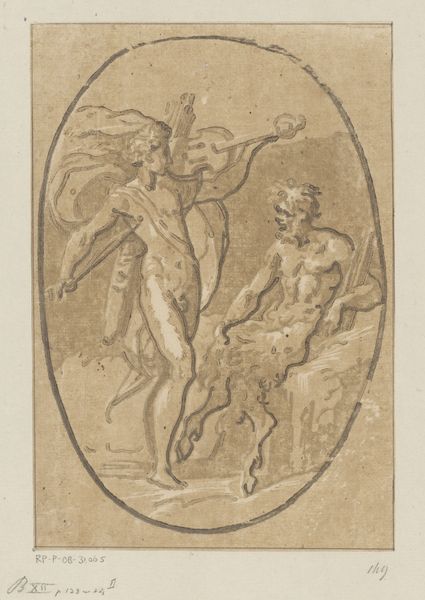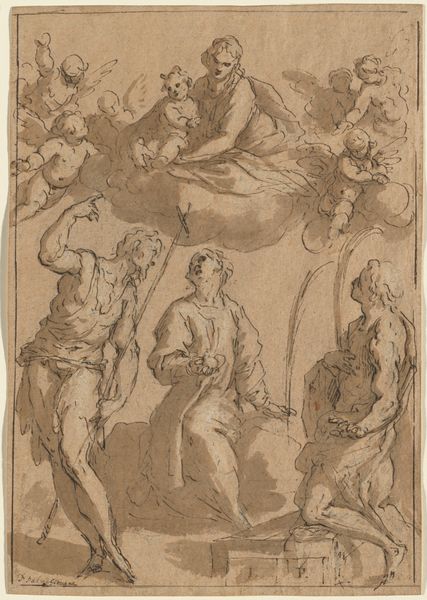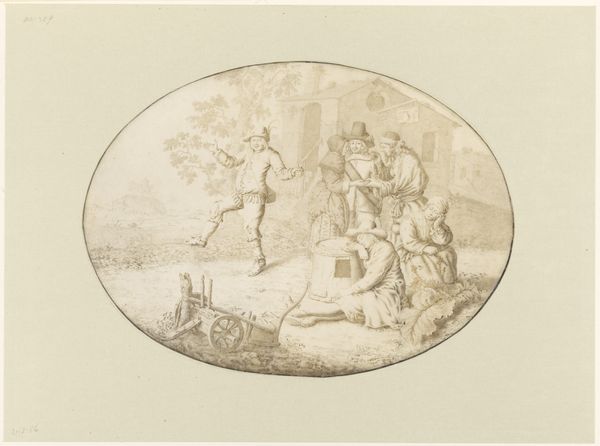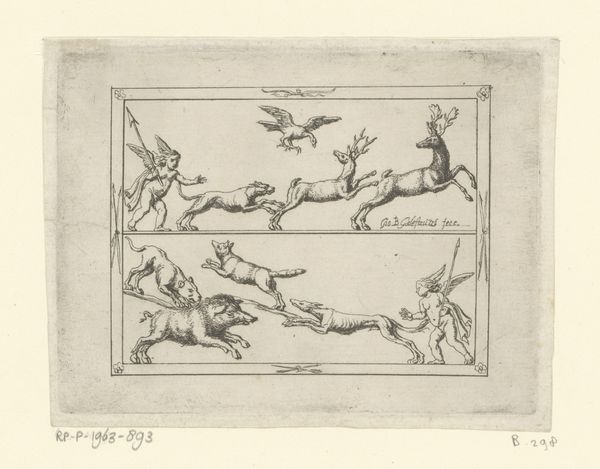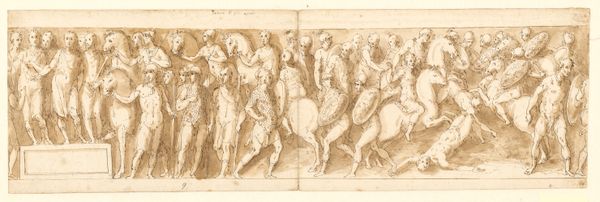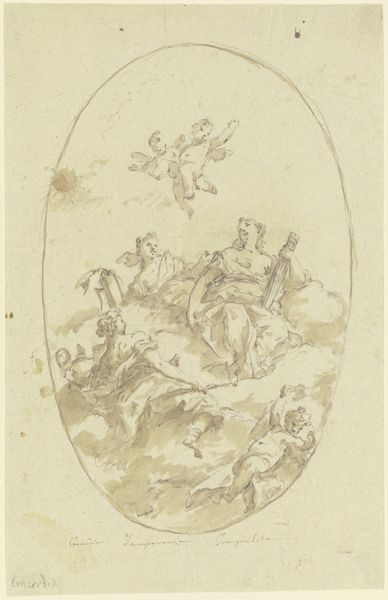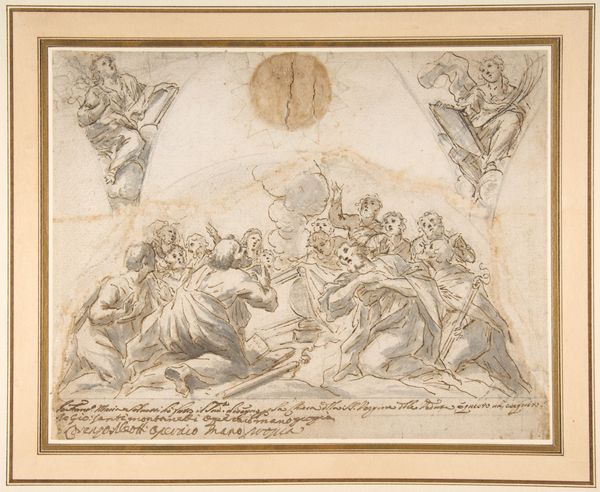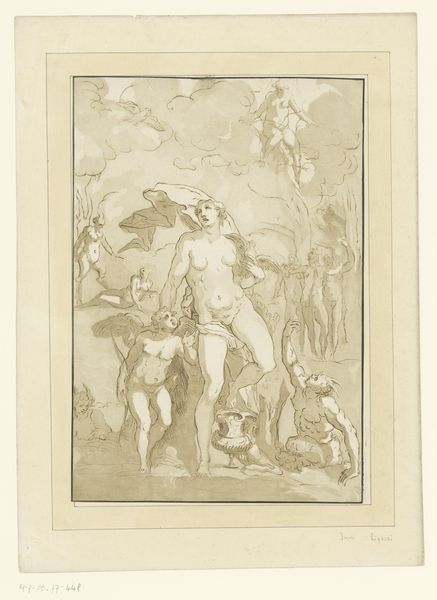
drawing, print, paper, ink
#
drawing
#
allegory
#
ink painting
# print
#
landscape
#
etching
#
figuration
#
paper
#
11_renaissance
#
ink
#
history-painting
#
italian-renaissance
Dimensions: 272 mm (height) x 357 mm (width) (bladmaal)
Editor: Here we have "Pan" and "Apollo and Marsyas," a 16th-century print by Ugo da Carpi, rendered in ink on paper. I'm struck by the use of allegory and how it's all framed in these oval vignettes. How do you interpret this work within the socio-political context of its time? Curator: It’s intriguing how da Carpi uses these classical myths. I see them less as pure aesthetic exercises, and more as commentaries on power dynamics and the justification of authority within the Church. Look at the story of Apollo flaying Marsyas alive after a musical contest—it’s a brutal display of dominance, but it was used to uphold divine and, by extension, societal hierarchies. Does the image invite us to consider how dominant cultures silence dissenting voices, even those with talent like Marsyas? Editor: That's a really interesting perspective. I hadn’t considered the power dynamic in such a direct way. The violence of silencing through cultural superiority… I mean, the bodies themselves seem almost tools in this kind of story. Curator: Precisely. Consider the medium: printmaking. It allowed for the wide distribution of such visual narratives, embedding these justifications into the popular imagination. Do you think this reinforces the authority of figures like Apollo and, metaphorically, the elite ruling classes of the time? Editor: It makes perfect sense that the Renaissance elites would align themselves with gods like Apollo, especially considering their emphasis on arts, beauty, and intellectualism as markers of higher status. But that also underscores the marginalization, even persecution, of those outside those narrowly defined boundaries. Curator: Indeed. It is a critical reminder that beauty and brutality can coexist, particularly when deployed to preserve structures of power and justify oppression. This image isn’t just a historical curiosity; it’s a reflection on ongoing cultural battles. Editor: It is. I definitely see the piece with new eyes. It really brings historical art to life when thinking about it from that angle, thanks!
Comments
No comments
Be the first to comment and join the conversation on the ultimate creative platform.
